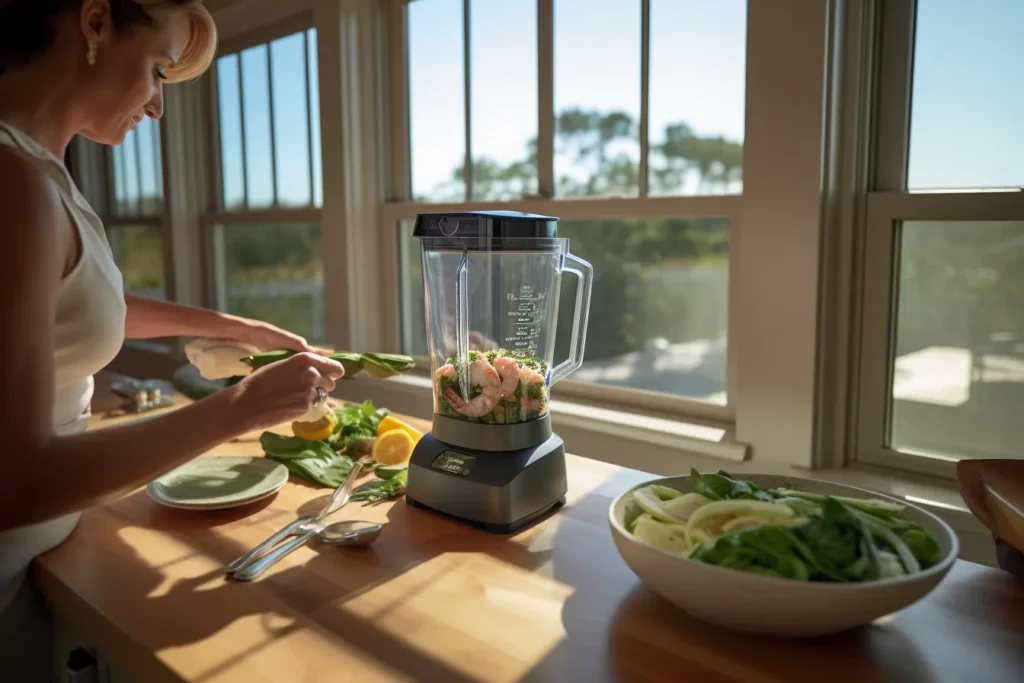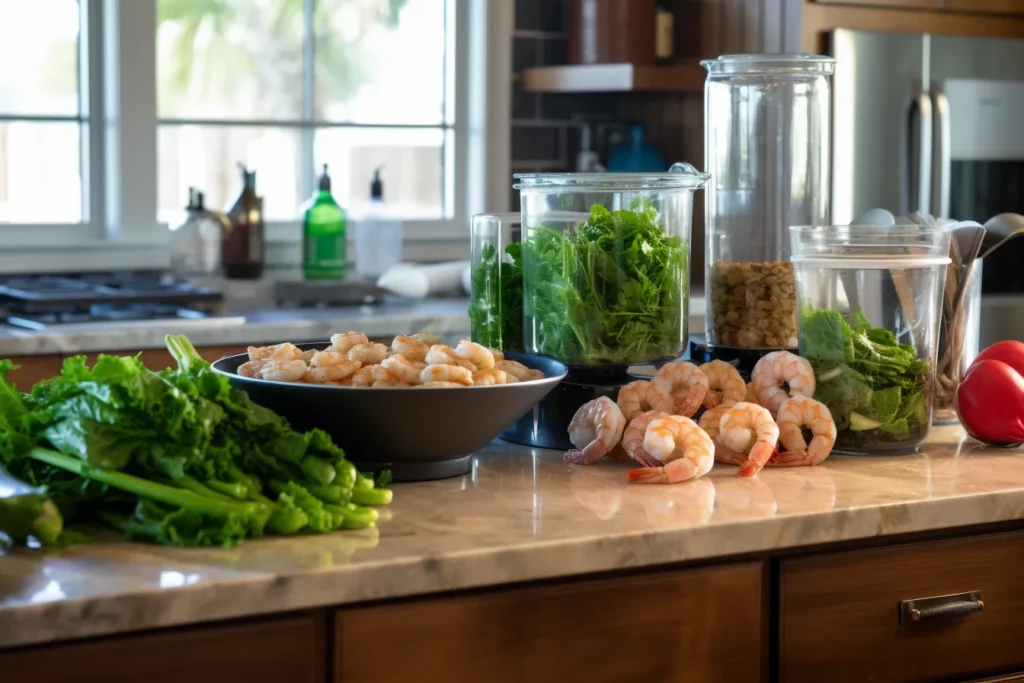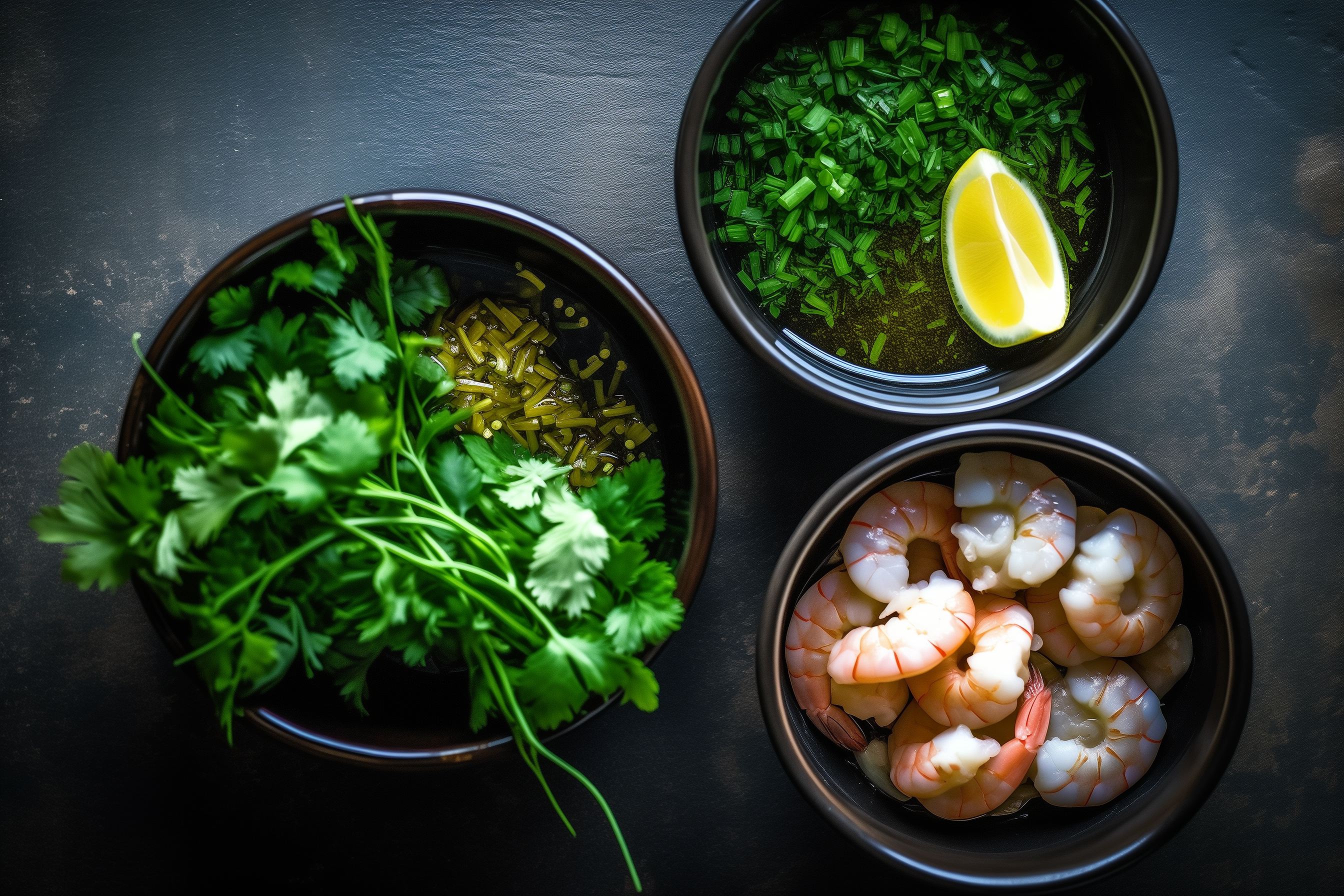Table of contents
Introduction: Fish Food Recipe
Feeding your fish doesn’t have to rely on store-bought options. With a carefully crafted fish food recipe, you can create nutritious, cost-effective meals tailored to your aquatic pets’ needs. Not only does this improve their health, but it also ensures your fish are getting fresh, high-quality ingredients without artificial additives.
Homemade fish food is a practical choice for aquarium enthusiasts. Whether you’re raising tropical fish, goldfish, or cichlids, providing balanced meals contributes to their growth, vibrant colors, and energy. Plus, making your own fish food lets you customize the recipe for herbivores, carnivores, or omnivores.
In this guide, we’ll explore everything you need to know about crafting the perfect fish food recipe. From understanding the right ingredients to storage tips, you’ll have all the tools to give your fish a healthy and happy diet.

Benefits of Homemade Fish Food
- Control Over Ingredients
One of the key advantages of a DIY fish food recipe is that you can carefully select fresh, wholesome ingredients such as vegetables, proteins, and supplements tailored to your fish’s specific dietary needs. As a result, you avoid unwanted fillers and harmful preservatives commonly found in commercial fish foods. - Cost-Effective Solution
Another great reason to make fish food at home is the significant cost savings it offers. Over time, especially if you have multiple fish or larger aquariums, the expenses of store-bought food can add up. However, by using this approach, you can reduce costs without compromising on quality. - Eco-Friendly Approach
Additionally, homemade fish food promotes sustainability. By reducing your reliance on pre-packaged and processed foods, you cut down on plastic waste and unnecessary packaging. This small yet impactful change helps protect both your fish and the environment. - Enhanced Nutritional Value
Lastly, when you make fish food at home, you have full control over the nutritional balance. You can include protein sources like shrimp or fish fillets, add healthy fats from oils, and incorporate greens like spinach or peas. This variety ensures your fish are getting a diverse diet that supports their well-being.
Ingredients for the Perfect Fish Food Recipe
Creating a balanced fish food recipe starts with selecting the right ingredients. By incorporating fresh, nutrient-dense options, you can mimic the natural diets of your fish and support their health. To ensure your fish thrive, let’s break down the essential ingredients into three categories: proteins, vegetables, and supplements. Additionally, we’ll include some helpful substitutions and variations for specific dietary needs.
1. Protein Sources: The Foundation of Your Recipe
Protein is a critical component in any fish food recipe, as it fuels growth and repairs tissues. Most fish, whether carnivorous or omnivorous, rely on protein as a primary energy source. Here are some excellent options:
- Shrimp or Prawns: Packed with essential amino acids, shrimp is a great protein source. Moreover, it enhances the flavor of the food, making it more appealing to your fish.
- Fish Fillets: Fresh or frozen fillets, such as tilapia or cod, are easily digestible and perfect for fish that require a high-protein diet. Alternatively, canned tuna in water (without added salt) can be used in moderation.
- Eggs: Not only are eggs affordable, but they also add a soft texture to the food, making it easier for smaller fish to consume.
Tip: For herbivorous fish, you can reduce the protein content slightly while focusing more on plant-based ingredients.
2. Vegetables: Essential for a Balanced Diet
In addition to protein, vegetables provide fiber, vitamins, and minerals that are crucial for digestion and immunity. Including a variety of vegetables ensures your fish receive all the nutrients they need.
- Spinach or Kale: Both are nutrient-dense greens rich in iron and vitamins. They can be blanched and chopped before adding to your recipe.
- Peas: Peas are excellent for aiding digestion and preventing bloating in fish. Simply boil them, remove the skins, and mash them.
- Zucchini or Cucumber: These are especially popular with herbivorous fish like plecos. You can slice them into thin pieces or puree them for mixing into the food.
Substitute: If fresh vegetables aren’t available, frozen options can work just as well. Ensure they’re defrosted and rinsed thoroughly before use.
3. Supplements: Boosting Nutritional Value
To complete your fish food recipe, it’s important to include supplements that enhance overall health and longevity. This not only ensures a well-rounded diet but also reduces the likelihood of deficiencies.
- Fish Oil: Adding a few drops of fish oil increases the omega-3 fatty acid content, which promotes vibrant colors and healthy scales.
- Spirulina Powder: A nutrient powerhouse, spirulina supports immunity and is particularly beneficial for herbivorous fish.
- Gelatin or Agar-Agar: These bind the ingredients together, forming solid food pellets or cubes. While gelatin is widely available, agar-agar is a vegetarian alternative.
Customizations for Special Diets
- For Herbivores: Reduce animal-based proteins and focus more on plant-based sources like spirulina, algae, and blanched greens.
- For Carnivores: Increase the protein ratio by incorporating more shrimp, fish, or even bloodworms.
- For Omnivores: Balance both protein and vegetable components to create a diverse and satisfying diet.
By carefully combining these ingredients, you can create a nutritious, well-rounded fish food that caters to your aquarium’s unique inhabitants. In the next section, we’ll guide you through the preparation process step-by-step.

Preparation: Step-by-Step Guide to Making Your Fish Food Recipe
Now that you’ve gathered all your ingredients, it’s time to prepare your homemade fish food recipe. By following these detailed steps, you’ll ensure the food is not only nutritious but also easy for your fish to consume. Additionally, this process allows you to customize textures and portion sizes to suit different species. Let’s get started!
1. Blend the Ingredients: Creating a Smooth Base
First, combine all your selected ingredients into a food processor or blender. Start by adding the protein sources, such as shrimp or fish fillets, as these form the base of your recipe. Then, gradually add the vegetables, like spinach, peas, or zucchini, to create a balanced mixture.
- Be sure to blend the mixture until it reaches a smooth consistency. This is particularly important because smaller fish struggle with larger chunks of food.
- Additionally, you can add water during blending if the mixture feels too thick.
Tip: If you’re making food for herbivorous fish, consider using more greens and spirulina powder to achieve the desired balance.
2. Incorporate Supplements: Boosting Nutritional Value
Next, mix in your chosen supplements, such as fish oil, spirulina powder, or crushed multivitamins. These additions are essential for enhancing the overall nutritional profile of your fish food. Moreover, they help to support your fish’s immune system and improve their vibrant colors.
- Sprinkle spirulina powder into the blended mixture and pulse the blender for a few seconds to evenly distribute it.
- If using gelatin or agar-agar, dissolve it in warm water beforehand, as this will act as the binding agent in the next step.
Alternative: If you don’t have gelatin, cornstarch can work as a substitute, but it may result in a softer texture.
3. Shape the Food: Pellets, Cubes, or Sheets
Once your mixture is ready, it’s time to shape it into forms that suit your fish’s eating habits. For instance, small pellets are ideal for tiny fish, while larger cubes or sheets work well for bigger species.
- For Pellets: Use a piping bag or your hands to roll the mixture into small, bite-sized balls.
- For Cubes: Spread the mixture into a flat, even layer on a baking sheet, then cut it into squares once it sets.
- For Sheets: Spread the mixture thinly, as this is perfect for fish that nibble on surfaces, like plecos.
Furthermore, ensure the shapes are consistent so that all your fish can eat comfortably.
4. Cook or Freeze: Setting the Food
After shaping, you’ll need to set the food to make it firm and long-lasting. This step not only makes the food easier to store but also ensures it holds its shape in the water.
- Cook Option: Steam the food for a few minutes until it sets. Steaming preserves most of the nutrients while solidifying the texture.
- Freeze Option: Alternatively, freeze the shaped food directly. Freezing is particularly useful if you plan to store the food for a longer time.
Important Note: Always allow the food to cool or fully set before feeding it to your fish.
5. Portion and Store: Ensuring Freshness
Lastly, divide the fish food into portions that match your aquarium’s feeding needs. Store the portions in airtight containers or freezer bags to maintain freshness. Additionally, label the containers with dates to track storage times.
- Frozen food can last up to three months, while refrigerated food should be used within a week.
- If you prefer smaller daily servings, consider using an ice cube tray to freeze individual portions.
By taking the time to follow these steps, you’ll create a high-quality fish food that’s customized for your aquatic pets. In the next section, we’ll discuss cooking and serving tips, including troubleshooting common issues that may arise during feeding.
Cooking and Serving: Perfecting Your Fish Food Recipe
Now that your fish food is prepared, the next step is ensuring it’s cooked or served correctly. Proper cooking methods, along with effective serving techniques, help your fish enjoy their meals while reaping the full nutritional benefits. Let’s dive into these important steps with practical tips and solutions for common challenges.
1. Cooking the Fish Food: Setting It Up for Success
To begin, if you’ve chosen to cook the fish food, steaming is the best method. This not only retains essential nutrients but also provides a firmer texture, which ensures the food stays intact in the water.
- Steam the Mixture: Place the prepared fish food cubes or sheets in a steamer. Allow them to cook for 5–10 minutes, checking periodically to ensure they have set.
- Avoid Overcooking: While it’s important to fully cook the food, avoid excessive heat, as this could destroy key nutrients like vitamins and omega-3 fatty acids.
Alternative: If steaming isn’t an option, you can bake the food at a low temperature (around 200°F or 90°C) for 10–15 minutes. However, be sure to check the texture frequently to avoid drying it out.
2. Freezing the Food: A Practical Option
If you’ve opted for freezing instead of cooking, ensure the portions are properly sealed to maintain freshness. Freezing is particularly helpful for long-term storage and allows you to make larger batches in advance.
- Ice Cube Tray Method: As mentioned earlier, freezing individual portions in an ice cube tray makes serving easy. Once frozen, pop the cubes out and transfer them to a freezer bag.
- Label Your Containers: To avoid confusion, label your bags or containers with the preparation date and ensure they are stored in a freezer-safe space.
Moreover, always thaw a portion before feeding it to your fish, as this prevents temperature shock in the tank.
3. Serving the Fish Food: Timing and Quantity
Now comes the most exciting part—feeding your fish! However, it’s crucial to serve the right amount and at the correct times to avoid overfeeding and water contamination.
- Start Small: Begin with a small portion of food, observing how much your fish consume in two to three minutes. If there’s leftover food, reduce the amount in future feedings.
- Feed Once or Twice Daily: For most fish, feeding once or twice per day is sufficient. Additionally, maintaining a regular feeding schedule helps support a healthy metabolism.
- Observe Eating Habits: Watch your fish closely as they eat. If some fish struggle to access food, consider breaking the portions into smaller pieces or spreading them around the tank.
Pro Tip: Feed your fish in the same area of the tank each time. This helps them learn where to find their meals, reducing food waste.
4. Troubleshooting Common Issues
Even with the best preparation, you may encounter a few challenges when feeding homemade fish food. Here’s how to handle them effectively:
- Food Sinks Too Quickly: If your food sinks before your fish can eat it, try making smaller, lighter pellets or incorporating more gelatin to slow down sinking.
- Cloudy Water: If the food causes water to become cloudy, reduce the serving size or ensure it’s fully cooked. Additionally, remove uneaten food promptly after feeding.
- Selective Eaters: If some fish refuse the food, experiment with adding small amounts of garlic or fish oil to make it more appealing. Gradually introduce new recipes to encourage them to adapt.
By focusing on proper cooking and serving techniques, you’ll ensure your homemade fish food not only nourishes your fish but also keeps your aquarium clean and balanced. In the following section, we’ll explore variations and customizations, so you can create even more recipes tailored to specific species or preferences.
Variations and Customizations: Tailoring Your Fish Food Recipe
Every aquarium is unique, and so are the dietary preferences of your fish. Whether you’re caring for herbivorous species like plecos or carnivorous ones like bettas, customizing your fish food recipe ensures all your aquatic pets thrive. Let’s explore some variations and easy adjustments you can make to suit different needs.
1. Herbivorous Fish: Plant-Based Recipes
Herbivorous fish require a diet rich in plant matter, as their digestive systems are designed to break down fibrous foods. To cater to their needs, increase the proportion of vegetables and algae in your recipe.
- Add More Greens: Use spinach, kale, or lettuce as the main ingredient. Blanch these greens to soften them, making them easier to digest.
- Include Algae: Incorporate spirulina powder or crushed algae wafers to mimic their natural feeding habits.
- Limit Protein: While herbivorous fish still need small amounts of protein, avoid heavy sources like shrimp or fish fillets. Instead, use softer options like boiled peas.
Tip: For plecos or other grazing fish, spread the food mixture thinly into sheets before drying or freezing. This way, they can nibble at it over time.
2. Carnivorous Fish: Protein-Packed Meals
Carnivorous fish, such as bettas or arowanas, thrive on high-protein diets. To accommodate their needs, prioritize animal-based ingredients in your fish food recipe.
- Focus on Shrimp and Fish Fillets: These are easily digestible and packed with essential nutrients. Raw or steamed options work best.
- Add Bloodworms or Daphnia: Frozen or freeze-dried options are ideal for enhancing protein content. Blend them into the mixture for added variety.
- Minimize Vegetables: Although small amounts of vegetables are acceptable, focus on meat-based ingredients to mimic their natural diet.
Alternative: For larger carnivorous fish, form the food into bigger chunks or cubes to better suit their feeding habits.
3. Omnivorous Fish: Balanced Diet Options
Omnivorous fish, like guppies or mollies, need a mix of proteins and plant matter. By balancing these components, you can create a versatile recipe that satisfies their dietary requirements.
- Blend Equal Parts Protein and Vegetables: Use shrimp or fish fillets along with leafy greens and zucchini.
- Include Fats: Add fish oil to support their energy needs and enhance their vibrant colors.
- Customize for Size: Make smaller pellets or flakes for smaller omnivorous fish to ensure they can eat comfortably.
4. Special Diets: Adjustments for Health and Preferences
Sometimes, specific conditions or preferences call for unique modifications.
- Low-Carb Option: For fish prone to bloating, reduce starchy ingredients like peas and zucchini. Focus on lean proteins and greens instead.
- Allergy-Friendly Recipes: If your fish are sensitive to certain ingredients, such as commercial additives, make your recipe completely free of synthetic binders or artificial flavors.
- High-Fiber Mix: For constipated fish, add more fibrous ingredients like boiled peas and pumpkin to aid digestion.
Experimenting with Flavors and Textures
Additionally, you can experiment with flavors to make the food more appealing. Garlic juice, for example, is a natural appetite stimulant for many species. You can also adjust textures—softer for small fish or firmer for larger ones—to match their feeding behavior.
By personalizing your fish food recipe, you’ll create a diet that meets the unique needs of your aquatic friends. In the next section, we’ll cover serving suggestions, including creative ways to present food in your aquarium.
Conclusion: Why Homemade Fish Food is a Great Choice
Making your own fish food recipe is not just a way to save money—it’s also a great way to keep your fish healthy and happy. By using fresh, simple ingredients, you can give your fish the nutrients they need to grow, stay colorful, and live a long life.
Homemade fish food also lets you adjust the recipe to match what your fish like to eat, whether they prefer plants, meat, or a mix of both. This is something store-bought food cannot do. Plus, by making fish food at home, you cut down on waste and avoid harmful additives, keeping your tank cleaner and safer.
When you follow the right steps to prepare and serve the food, your fish will get meals they love, and you’ll enjoy watching them thrive. With just a little effort, you can create a healthy diet that makes your fish more active and vibrant.
Your fish deserve fresh, healthy food—and you can make it with ease!

